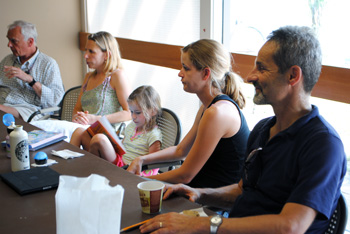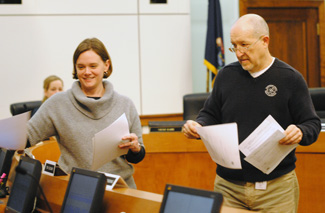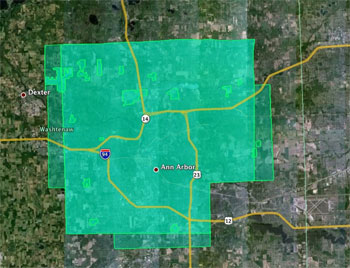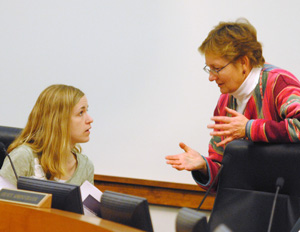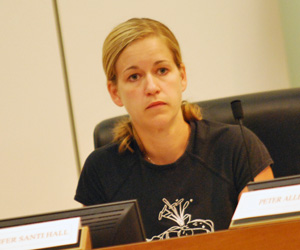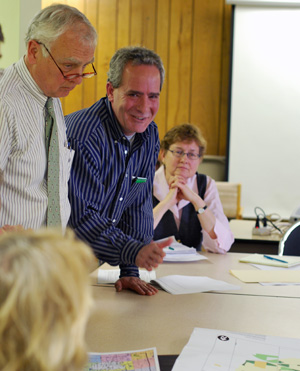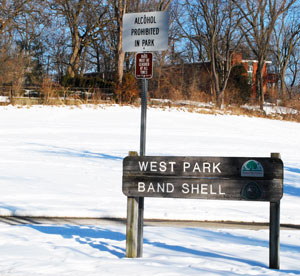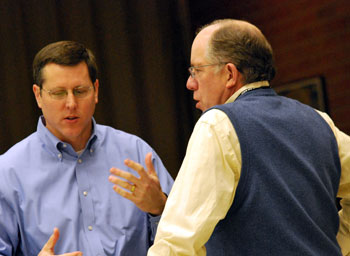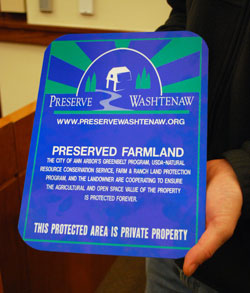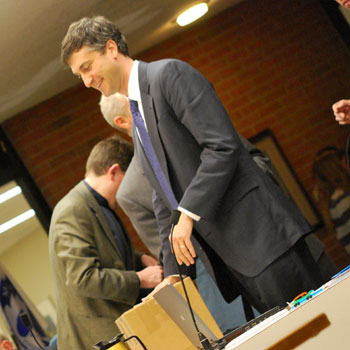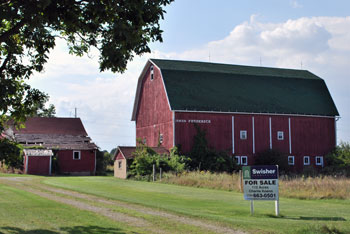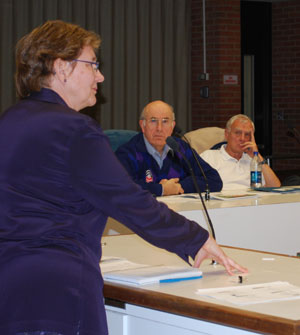Ann Arbor greenbelt advisory commission meeting (May 11, 2011): Wednesday was the last regular meeting for two greenbelt commissioners – terms end on June 30 for chair Jennifer S. Hall and Gil Omenn, who were both active in efforts to launch the program. Both have reached the term limits for serving on GAC.
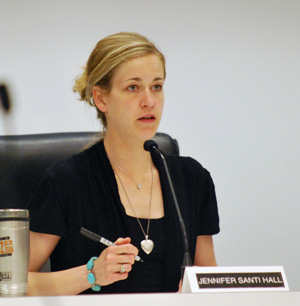
Jennifer S. Hall, chair of the Ann Arbor greenbelt advisory commission, presided over her last regular meeting on May 11. Her term ends on June 30; GAC's June meeting will be a joint session with the city's park advisory commission.
Instead of holding their regular meetings in June, the greenbelt and park advisory commissions have scheduled a joint working session to discuss common goals and priorities – they last met jointly in April 2010.
Term limits were raised in another context during Wednesday’s meeting, when commissioners were asked to recommend that city council restate current GAC membership terms. Mary Fales of the city attorney’s office has been working on the revisions, after inconsistencies were discovered for current appointments. For example, a term for Ecology Center director Mike Garfield ended on June 30, 2009. Though he continued to serve, he was not officially reappointed to another three-year term until Sept. 21, 2010. Under the resolution recommended by GAC, all terms would end on June 30, over staggered years.
Also at Wednesday’s meeting, commissioners got an update about Michigan budget-related legislation that would cut tax credits for farmers. They were also briefed by staff about changes to the federal Farm and Ranchland Protection Program – the city has received millions of dollars worth of FRPP grants over the years to offset the cost of development rights purchased in the greenbelt.
Ginny Trocchio, support staff for the greenbelt program, told commissioners that June 16 is the date for a greenbelt celebration, starting at 5:30 p.m. at the Braun farm in Ann Arbor Township, which was added to the greenbelt in 2010. The event will be open to the public, and will include a presentation to highlight the program’s accomplishments.
Dan Ezekiel, GAC’s vice chair, reported that the subcommittee he’s leading to look at possible changes in the greenbelt boundary will be making a proposal at the commission’s July 13 meeting.
And in its final action of the meeting, commissioners emerged from a closed session and voted to recommend that Ann Arbor city council make a $127,200 offer for the purchase of development rights on a property within the greenbelt. Before appearing on the city council’s agenda, details of these greenbelt acquisitions are not made public – parcels are identified only by their application number. [Full Story]






